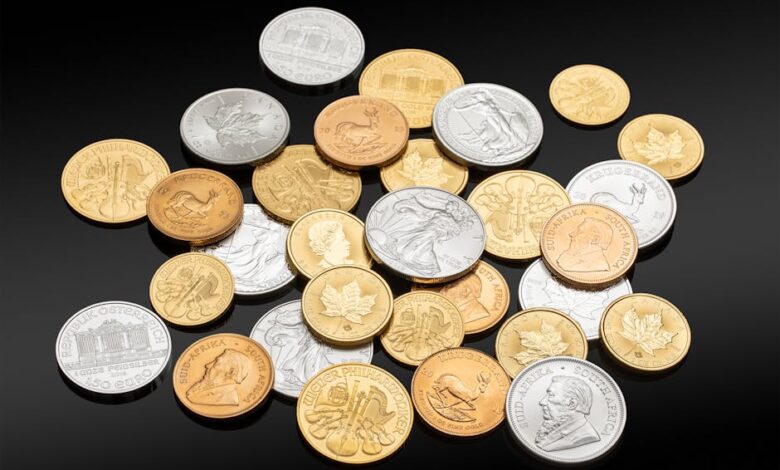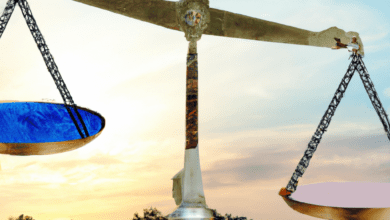Metals in Motion: Understanding Market Dynamics and Investment Opportunities in a Changing Economy

In the intricate tapestry of global economies, the role of metals extends far beyond their physical properties; they are vital indicators of economic health and catalysts for technological advancement. This article delves into the multifaceted world of metals, exploring how silver serves dual functions in both industrial applications and investment arenas. We will examine copper prices as a barometer of economic activity, analyze the burgeoning demand for rare earth metals driven by green energy technologies, and compare the investment potential of platinum and palladium. Furthermore, we will discuss the significance of metals in diversifying investment portfolios, the effects of inflation on the pricing of precious and industrial metals, and the future of aluminum in a sustainable economy. Lastly, we will consider how mining regulations shape metal prices, influencing markets and investment strategies. Join us as we uncover the intricate connections between these essential materials and their broader economic implications.
- 1. "Shining a Light on Silver: Dual Roles in Industry and Investment"
- 2. "Copper Chronicles: Price Movements as Economic Barometers"
- 3. "Rare Earths Revolution: Green Energy's Demand Surge and Its Implications"
1. "Shining a Light on Silver: Dual Roles in Industry and Investment"
Silver has long been recognized for its unique properties, making it a vital component in various industrial applications while also serving as a popular investment asset. In the industrial sector, silver's high electrical conductivity, thermal conductivity, and reflectivity make it indispensable in electronics, solar panels, and various manufacturing processes. For instance, silver is used in the production of photovoltaic cells, where it enhances energy conversion efficiency, contributing to the growth of the renewable energy sector. Additionally, its antimicrobial properties find applications in healthcare, textiles, and water purification, further solidifying its industrial significance.
On the investment front, silver is often viewed as a safe-haven asset, similar to gold, particularly during times of economic uncertainty. Investors turn to silver not only for potential capital appreciation but also as a hedge against inflation and currency devaluation. The market dynamics of silver can be influenced by both industrial demand and investment trends, creating a unique interplay that affects its price. For example, during economic downturns, while industrial demand may wane, increased investment interest can drive prices higher, and vice versa during periods of economic growth when industrial consumption surges.
Furthermore, silver's dual role is reflected in its price volatility, as shifts in industrial demand due to technological advancements or economic cycles can lead to significant fluctuations. This duality presents both opportunities and risks for investors. Understanding these dynamics is crucial for those considering silver as part of their investment strategy, as it allows them to navigate the complexities of the market effectively. Ultimately, silver’s role as both an industrial metal and an investment vehicle underscores its importance in the global economy, highlighting its potential for sustainable growth in various sectors.
2. "Copper Chronicles: Price Movements as Economic Barometers"
Copper has long been regarded as a critical indicator of global economic health, earning it the nickname "Dr. Copper." This moniker reflects its ability to forecast economic trends due to its widespread use in various industries, including construction, electronics, and manufacturing. As an essential component in electrical wiring, plumbing, and machinery, copper prices are closely tied to industrial activity and overall economic growth.
Price movements in copper are often seen as precursors to broader economic trends. When economic conditions are robust, demand for copper typically rises, leading to higher prices. Conversely, during economic downturns, demand diminishes, which can result in falling copper prices. Recent fluctuations in copper prices have both mirrored and predicted shifts in global economic sentiment. For instance, a surge in prices may indicate increased construction activity and infrastructure development, often spurred by government spending and investment, while declining prices can signal weakening demand due to reduced industrial output or economic uncertainty.
Moreover, geopolitical events and supply chain disruptions can significantly impact copper prices. Natural disasters, labor strikes, and regulatory changes in major copper-producing countries can lead to supply shortages, pushing prices higher. Conversely, technological advancements and alternative materials may also influence demand dynamics, potentially stabilizing or reducing copper prices over time.
Investors and analysts closely monitor copper price trends, using them as barometers to gauge the health of the global economy. As such, understanding the complexities of copper's price movements provides valuable insights into not only the metal itself but also the broader economic landscape.
3. "Rare Earths Revolution: Green Energy's Demand Surge and Its Implications"
The transition to green energy technologies has sparked a significant surge in demand for rare earth metals, which are crucial for producing a variety of renewable energy solutions. These metals, including neodymium, dysprosium, and terbium, are essential components in the manufacturing of high-performance magnets used in wind turbines and electric vehicle (EV) motors. As the global economy shifts toward sustainable energy sources, the need for these materials is expected to increase dramatically.
The implications of this demand surge are multifaceted. First, it presents opportunities for innovation and investment in mining and processing technologies aimed at extracting rare earths more efficiently and sustainably. Companies are exploring new methods to recycle rare earth elements from electronic waste, which could alleviate some pressure on mining operations while promoting a circular economy.
However, the rising demand for rare earth metals also raises concerns over supply chain vulnerabilities. Currently, a significant portion of the world’s rare earth production is concentrated in a few countries, particularly China, which has historically controlled the majority of the market. This concentration can lead to geopolitical risks and potential supply disruptions, prompting countries to seek alternative sources and develop domestic capabilities.
Additionally, the environmental impact of mining practices must be considered, as the extraction of rare earth metals can result in significant ecological damage if not managed responsibly. As the green energy sector grows, there is a pressing need for sustainable mining practices that minimize environmental harm and ensure that the benefits of renewable technologies are not overshadowed by the ecological costs of resource extraction.
In summary, the surge in demand for rare earth metals driven by green energy technologies presents both opportunities and challenges. While it fosters innovation and investment in sustainable practices, it also necessitates a reevaluation of supply chains and environmental impacts to ensure a balanced approach to the transition toward a greener economy.
In conclusion, the multifaceted roles of metals in both industrial applications and investment strategies underscore their significance in today's economy. Silver's unique position as both a critical industrial component and an attractive investment asset illustrates its versatility and importance in various sectors. Similarly, copper prices serve as a vital indicator of global economic health, while the increasing demand for rare earth metals driven by green energy technologies highlights the shifting landscape of resource utilization.
The comparison of platinum and palladium reveals the complexities of investment choices within the precious metals arena, emphasizing the need for investors to stay informed about market dynamics. Furthermore, incorporating metals into investment portfolios can provide valuable diversification, balancing risks and potential returns. The interplay between inflation and metal prices adds another layer of complexity, demonstrating how macroeconomic factors influence market behavior.
As we look to the future, aluminum's role in a sustainable economy becomes increasingly critical, particularly in light of evolving regulatory frameworks. The impact of mining regulations on metal prices cannot be overlooked, as they shape market accessibility and supply stability. Collectively, these insights highlight the intricate relationships between metals, economic indicators, and investment strategies, offering a comprehensive understanding of how these elements interact in an ever-changing global landscape. Investors and industry stakeholders must remain vigilant and adaptable to navigate the challenges and opportunities presented by this dynamic market.





